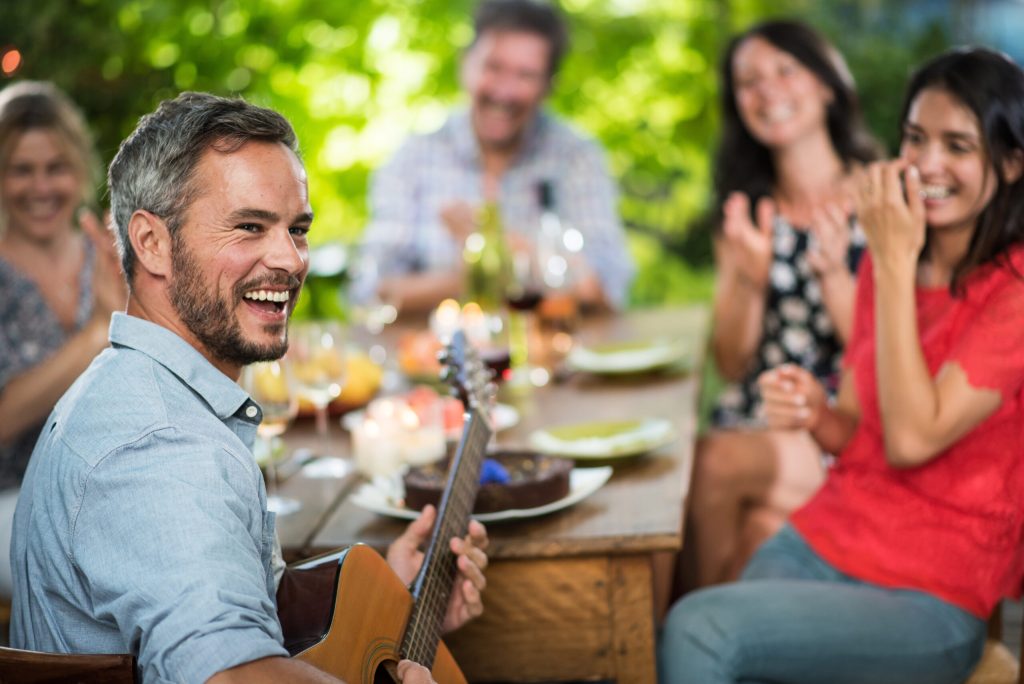Reunions aren’t really about nametags or buffet lines. They’re about showing up and realizing time has moved on, yet something about those years still binds everyone together. Planning one, however, can feel like signing up to herd cats while juggling old friendships, school politics, and the endless dance of modern schedules. It doesn’t have to be a headache. With some foresight and a little humor about the fact that no one remembers the fight in the cafeteria the same way, you can pull off a reunion that feels less like an obligation and more like a party worth circling on the calendar.
Starting With The Basics
Every reunion begins with a spark: one person casually mentions it online or a small group starts reminiscing, and suddenly the idea is out there. Before it snowballs into confusion, someone has to anchor the conversation. A good first move is setting up a central place where information lives. That might mean a simple website, a social media group, or even a shared spreadsheet if you’re working with a small class. The trick is to give people one reliable destination for updates.
Don’t overcomplicate the early stage. You don’t need a full committee yet, just a couple of reliable classmates who are willing to start the engine. Once you’ve agreed on a date range that makes sense, things can start falling into place. A little structure early keeps the project from dissolving into twenty email chains arguing over whether July or October is better.
Finding The People
Tracking down classmates has never been easier. Between social media platforms and the many digital trails we leave behind, most people can be reached with a bit of effort. If someone’s off the grid, yearbooks and old contact lists become lifesavers. The fact is, there are sites today that make it easy to do a free yearbook lookup, and that can give you a head start on locating those harder-to-reach classmates.
Reaching out personally goes a long way. A direct message or an old-fashioned email feels better than a mass blast that looks like junk mail. Think of it as nudging people rather than spamming them. Those who are hesitant might come around when they realize they’re not the only one debating whether to go. A small snowball of confirmations builds momentum fast. And while you’ll never reach everyone, cast a wide net. Even if only half the class shows up, that’s more than enough to bring the old energy back.
Deciding On The Venue
Picking the right location sets the tone for the whole night. Some groups go traditional and head straight back to the school gym. Others want a neutral setting that doesn’t feel like they’re stepping onto a set from the past. Hotels, community centers, local restaurants, even vineyards or breweries can work depending on the class size and budget. The best venue is one that matches the spirit of your class and the budget most people can handle without grumbling.
Accessibility matters more than anyone likes to admit. People will quietly skip if parking is a nightmare or the spot feels too far removed from town. Don’t just think about aesthetics, think about logistics. Make it easy to get there, easy to park, and easy to linger late into the evening without staff glaring at you.
Food and drinks should be flexible. A buffet or heavy appetizers keep things casual and allow people to move around, while a plated dinner might feel too formal for a group that just wants to laugh over memories. The atmosphere should encourage mingling rather than trapping people at assigned seats where they end up talking only to the same two classmates.
Balancing Nostalgia With The Present
A reunion is equal parts remembering and catching up. That balance can tilt too far in either direction if you’re not careful. Too much nostalgia, and it starts to feel like everyone’s clinging to the past. Too much focus on the present, and you lose the magic of why you all gathered in the first place.
Photos and memorabilia help without being overwhelming. A slideshow playing quietly in the background, a table with old yearbooks, or even a simple photo wall can do the trick. People love seeing who they were without having it shoved in their face. A playlist of songs from the era also sets the mood without needing a DJ to overhype the crowd.
Speeches should be kept short. No one needs a twenty-minute monologue about the glory days of the football team. A quick toast or two to acknowledge the shared history and thank everyone for coming is plenty. The real energy comes from conversations that happen naturally once people reconnect.
Making It Feel Special
A reunion doesn’t need fireworks or a headliner band to stand out, but it should feel like more than a random night out. Small touches go a long way. Thoughtful name tags with graduation photos printed beside names, a welcome cocktail, or a memory table honoring classmates who’ve passed remind everyone that effort was made.
This is where styling tips sneak in. Think about lighting, table settings, or even a simple photo booth corner. It’s not about turning the night into a wedding reception but about making the room feel like it has personality. People remember when a space feels inviting. A warm color palette, comfortable seating areas, and details that nod to your graduating year keep it grounded in familiarity without making it feel like a high school rerun.
Another way to elevate the evening is through keepsakes. It could be as simple as a class photo taken at the event and sent out digitally afterward, or something quirky like branded cups or tote bags. These little mementos make people smile and extend the memory beyond the evening itself.
Handling The Details Without Burning Out
Behind every smooth reunion is a lot of invisible work. Budgeting, RSVPs, vendor coordination, decorations, and communication all add up. Spreading responsibility keeps the weight off one person’s shoulders. A small committee works best when jobs are clearly divided—one person handles money, another takes communication, another works with the venue, and so on. That prevents burnout and ensures things don’t slip through the cracks.
Technology helps more than it hurts here. Payment apps streamline ticket sales, group emails or event platforms keep communication tidy, and spreadsheets keep track of RSVPs. Just resist the urge to drown people in reminders. A steady, polite flow of updates is far better than a flood of notifications that lead to muted groups and missed messages.
It’s also smart to plan for surprises. People will cancel last minute, vendors will misplace orders, or the weather will mess with your outdoor setup. None of these things will sink the night if you’ve got backup plans and a sense of humor about the chaos. Flexibility is just as important as preparation.
A Last Word On Reunions
The magic of a high school reunion is that it’s both familiar and new at once. You’re surrounded by people who knew you before adult life left its marks, but you’re also seeing how everyone has carried their stories forward. Planning one is less about perfection and more about creating space for those connections to happen again.
If you can set the stage with a welcoming venue, thoughtful touches, and just enough organization to keep things humming, the rest takes care of itself. People remember the laughs, the reconnections, and the sense that time may pass but the ties still hold. A well-planned reunion doesn’t feel like stepping back in time. It feels like proof that those old ties still matter.

